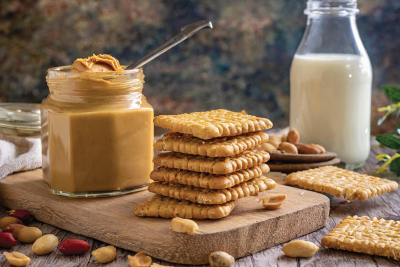George Ellison
Since the mid-1980s, I’ve been researching and writing about events surrounding the Cherokee removal of 1838, especially those pertaining to the capture and execution of Tsali — who thereby became a Cherokee martyr — and three of his sons.
Paul Fink and Myron H. Avery were two of the foremost explorers of the Southern Appalachians — especially the Great Smoky Mountains — during the first half of the 20th century. In a paper they coauthored for “Appalachia” magazine in 1936, Fink and Avery concluded that, “Arnold Guyot was, beyond question, the most thorough explorer who ever penetrated the Appalachian system.
The preservation of the Cowee mound and village site alongside the Little Tennessee River in Macon County is truly significant in regard to this region’s cultural history. The Hall and Porter families are to be commended for making this possible through the agencies of the Land Trust for the Little Tennessee and the Eastern Band of the Cherokee Indians.
It seems that every lawn care commercial on TV or radio these days is aimed at touting a product which eradicates that obnoxious “weed” known as dandelion. What’s wrong with a few dandelions? Does everyone want a yard that looks like the putting greens at Augusta National? I like dandelions.
Flame azalea is one of our most magnificent common shrubs here in the Smokies region. From late spring into early summer its flowers are produced in profusion on low growing, twiggy shrubs that are often as wide as they are high. The funnel-shaped blossoms that seemingly light up woodland glades range in color from red to yellow to orange and all shades in between.
Doctoral dissertations don’t usually make for exciting reading. There are, however, exceptions.
We are attracted to water. Mountain paths always wind down to water. Water is the essence of our very being ... especially here in the mountains.
 Leading a field trip isn’t complicated. But there may be more to it than you suppose. It helps if you know ahead of time where you’re going to make stops; where to eat lunch; and where the bathrooms are situated.
Leading a field trip isn’t complicated. But there may be more to it than you suppose. It helps if you know ahead of time where you’re going to make stops; where to eat lunch; and where the bathrooms are situated.
 A book I read about the Suwannee River featured numerous photographs of trees overhanging the waterway festooned with Spanish moss. Spanish moss isn’t, by the way, a true moss at all but a vascular plant that reproduces via tiny flowers. But it is an epiphytic plant; that is, a plant which grows upon another plant or object for support.
A book I read about the Suwannee River featured numerous photographs of trees overhanging the waterway festooned with Spanish moss. Spanish moss isn’t, by the way, a true moss at all but a vascular plant that reproduces via tiny flowers. But it is an epiphytic plant; that is, a plant which grows upon another plant or object for support.
 Although bird identification can be perplexing — baffling at times for even the most accomplished birders — the principles of identification are relatively simple. We recognize birds by their visual appearances and by their vocalizations.
Although bird identification can be perplexing — baffling at times for even the most accomplished birders — the principles of identification are relatively simple. We recognize birds by their visual appearances and by their vocalizations.
 Last Saturday, I led a bird identification workshop for the Smoky Mountain Field School. We started out in the morning in a residential area (Minot Park) in Gatlinburg and worked our way into the higher elevations of the national park by late afternoon. The weather at Newfound Gap was perfectly awful: wind, rain, fog, cold, you name it. But it was a good group and we did OK.
Last Saturday, I led a bird identification workshop for the Smoky Mountain Field School. We started out in the morning in a residential area (Minot Park) in Gatlinburg and worked our way into the higher elevations of the national park by late afternoon. The weather at Newfound Gap was perfectly awful: wind, rain, fog, cold, you name it. But it was a good group and we did OK.
Naturalist Donald Culross Peattie (1898-1964) was born in Chicago. In his autobiography The Road of a Naturalist (1941), Peattie recalled his first extended visit to the North Carolina mountains in 1906 as a time when he “saw the world of people fall away, grow small, grow hazy blue, forgotten. In seven months upon that isolated summit of the Appalachians, I began to discover a world older and greater. It is the world now of my established habitation, my working days and holidays, and it lies open to all men, in valleys as on mountains, by any road you choose to enter.”
 That’s the news. Our common breeding swallows have always been purple martins, barn swallows, and northern rough-winged swallows. To a lesser extent, tree swallows also breed here, where there are suitable tree cavities or boxes. Cliff swallows are another matter.
That’s the news. Our common breeding swallows have always been purple martins, barn swallows, and northern rough-winged swallows. To a lesser extent, tree swallows also breed here, where there are suitable tree cavities or boxes. Cliff swallows are another matter.
 Elizabeth and I were sitting on the deck Monday evening when a tiny bird made an abbreviated appearance — apparently just to check us out — and disappeared. It took only a fleeting glimpse for us to know that our visitor had been a blue-gray gnatcatcher. There is, after all, nothing else in the avifauna of the Smokies region quite like the mighty mite. It’s a bird you’ll enjoy knowing once you learn its basic characteristics.
Elizabeth and I were sitting on the deck Monday evening when a tiny bird made an abbreviated appearance — apparently just to check us out — and disappeared. It took only a fleeting glimpse for us to know that our visitor had been a blue-gray gnatcatcher. There is, after all, nothing else in the avifauna of the Smokies region quite like the mighty mite. It’s a bird you’ll enjoy knowing once you learn its basic characteristics.
I have two options when driving back and forth from home to town. One is along a river and the other isn’t. The choice is easy. I always follow the route along the north side of the Tuckaseigee west of Bryson City. If asked to name that section of road I’d name it for a tree. I’d call it Sarvis Road because every year that’s where I note for the first time — as I did this past Monday — that serviceberry is in bloom. The showy white flowers with their ribbon-like petals are frequently so numerous on a given tree’s bare limbs they seem to be inundated with snow. They seem even whiter this year.
I’m sometimes asked if the prehistoric Cherokees used any sort of poisons on their blowgun darts. These darts (slivers of black locust, hickory, or white oak) were from 10 to 20 inches long with thistledown tied at one end to form an air seal in the blowgun (a hollowed piece of cane cut to a length of seven to nine feet). The Cherokees were accurate with these weapons up to 60 feet, especially when shooting birds, but there is no evidence they used poisons of any sort on their darts.
 Earlier this morning (Tuesday, March 26) I gazed wishfully through my office window here in Bryson City. About all I could see was the fire station across the street just off the town square. Blue-gray snowflakes were slanting down. I was waiting for something to happen that I could write about. And then, as TV comedian Jackie Gleason used to say, “A-way we go!” All a writer really needs is a subject. Just a hint will generally do. The process of writing — and the way different writers go about it — is as interesting (to writers) as what gets written.
Earlier this morning (Tuesday, March 26) I gazed wishfully through my office window here in Bryson City. About all I could see was the fire station across the street just off the town square. Blue-gray snowflakes were slanting down. I was waiting for something to happen that I could write about. And then, as TV comedian Jackie Gleason used to say, “A-way we go!” All a writer really needs is a subject. Just a hint will generally do. The process of writing — and the way different writers go about it — is as interesting (to writers) as what gets written.
 It’s just about morel time. By early April (if not sooner), the succulent spring-fruiting fungi that are the most sought after mushrooms in North America will be popping up in woodlands across Western North Carolina.
It’s just about morel time. By early April (if not sooner), the succulent spring-fruiting fungi that are the most sought after mushrooms in North America will be popping up in woodlands across Western North Carolina.
 Like Old Esdras in the Bible, some live in a land of milk and honey. Here in the Blue Ridge, we live in the land of water and rock. Moving water and worn stone are the predominant features in our terrain. Landscapes here were not sculpted by wind. They have been — and are being — eroded into and out of existence as the underlying rock slowly accommodates water.
Like Old Esdras in the Bible, some live in a land of milk and honey. Here in the Blue Ridge, we live in the land of water and rock. Moving water and worn stone are the predominant features in our terrain. Landscapes here were not sculpted by wind. They have been — and are being — eroded into and out of existence as the underlying rock slowly accommodates water.
 As you read this it may well be freezing or even icy outside. But before long you’ll be outside working in the garden or searching for early spring wildflowers.
As you read this it may well be freezing or even icy outside. But before long you’ll be outside working in the garden or searching for early spring wildflowers.
How do I know? Well, for one thing, it always happens doesn’t it? Spring follows winter. Yes, but certain early signs — harbingers of spring — also assure me that things are on track.
I like “old time rock and roll” too. And I recently got some of my old time records, CDs, iPods, etc., off the shelf. But what I‘ve been listening to are bird calls and songs. The birds are getting ready for the breeding season — and so am I, in my own way.
I forget most everything from season to season, if not from day to day. Wildflower names have to be relearned. Bird calls and songs fade. So I return each year to self-imposed and self-taught remedial Bird Song 101.
In the natural world there are certain experiences that rivet our attention and remain stored in our memory banks. Through the years, I’ve written about my own encounters with rare plants, endangered landscapes, copperheads and timber rattlers, coyotes, skunks, eagles, red and gray foxes, box and snapping turtles, and so on. Not infrequently, I’ve received feedback from readers reporting that they have had similar experiences.
About once a year or less, I work up the nerve to publish poems in this space. Head for cover. It’s that time of the year again.
Rhododendrons are a part of the heath family (Ericaceae), which includes such diverse members in regard to size and habitat as pipsissewa, trailing arbutus, mountain laurel, doghobble, and sourwood. There are three evergreen rhododendron species in the southern mountains: rosebay (Rhododendron maximum), Catawba or purple (R. catawbienese), and Carolina (R. minus).
I’m rediscovering that it’s good to just slip out of the office and amble around town for a few minutes. The semi-urban landscape here in Bryson City — or any of the other little mountain towns — provides an interesting admixture of human endeavors with a teeming population of wildlife and plants that have adapted to our ways. And even if you don’t spot any interesting plants or animals, the walk will do you good.
 Surprisingly, a recent column about wood-burning cookstoves attracted as much attention as anything I’ve written for years. Folks who live in The Smoky Mountain News distribution area and can pick up the print edition were the most numerous e-mail correspondents, of course. But a lot of people outside of the region must read the publication online as well because at least 10 people living in different parts of the country contacted me to reminisce about their woodstove experiences.
Surprisingly, a recent column about wood-burning cookstoves attracted as much attention as anything I’ve written for years. Folks who live in The Smoky Mountain News distribution area and can pick up the print edition were the most numerous e-mail correspondents, of course. But a lot of people outside of the region must read the publication online as well because at least 10 people living in different parts of the country contacted me to reminisce about their woodstove experiences.
The status of a given plant as either a “noxious weed” or a “lovely wildflower” is pretty much a matter determined in the mind’s eye of the beholder. Several weeks ago, in a column headed “Persecution of the Dandelion,” I defended that plant against the plethora of TV lawn care commercials calling for its eradication. I was startled by the number of emails I received that supported my sentiments.
If you like native Appalachian plants that are variable and adaptive, have interesting natural histories with abundant associations in both Cherokee and early white settler folklore, add immeasurably to the fall landscape with vivid colors, and provide nutritious fare for over-wintering birds, why then poison ivy is surely one of your favorites.
Have you ever noticed that once you start thinking about something or someone you haven’t seen in awhile, it’s not long before he, she, or it pops up? This can be disconcerting when it’s a he, she, or it you don’t particularly want to see.
I wrote a tribute to the black locust tree some time back. It’s time to take another look. This time around we’ll incorporate the perspectives of a French arborist who visited America during the mid-nineteenth century.
Locust is a winter tree. Outdoors, it’s durable in extreme weather and indoors, it makes superb firewood. When I refer to locust, it’s to black locust (Pseudoacacia robinia), not one of the several other species in that genus such as honey locust.
“The opportunistic nature of the species and its partial indifference to constraints of time and space make it an intriguing subject.”
— E.W. Dawson, North American Birds Online
Volcanoes “erupt,” birds “irrupt.” We haven’t experienced any eruptions of that sort lately, but we do have periodic irruptions of bird populations. This year at our feeders and probably yours, too, the species is the northern pine siskin. If you don’t know the siskin, you ought to. It’s a small goldfinch-like bird that comes and goes in the blink of an eye.
 For some, graveyards are morbid places. When I was a boy, I never liked to pass by or walk through one … especially in the dark. These days I rather enjoy visiting them ... for awhile. They are generally quiet. And unlike most modern cemeteries, which don’t have any trees at all, graveyards usually have a variety of old sometimes ancient trees.
For some, graveyards are morbid places. When I was a boy, I never liked to pass by or walk through one … especially in the dark. These days I rather enjoy visiting them ... for awhile. They are generally quiet. And unlike most modern cemeteries, which don’t have any trees at all, graveyards usually have a variety of old sometimes ancient trees.
Tuckaseigee, Oconaluftee, Heintooga, Wayah, Cullasaja, Hiwassee, Coweeta, Stecoah, Steestachee, Skeenah, Nantahala, Aquone, Katuwah, and on and on. Our place names here in the Smokies region are graced throughout with evidence of the Cherokee culture that prevailed for more than 700 years. Wouldn’t it be nice if Clingmans Dome was correctly designated as Mount Yonah (high place of the bears)?
“I am developing a taste for walking in cemeteries.”
– Jules Renard, “Journals” (December 1909)
Like Jules Renard, a turn-of-the-century French novelist, not a few of us are attracted to cemeteries. When looking for a quiet place, I often visit the one on Schoolhouse Hill next to the old Swain High football field in Bryson City. There’s a good view, in places, of the town and surrounding mountains. A grove of massive oaks shade the burying ground. It’s a good spot to have lunch.
Most people who hunt mushrooms do so in late summer and fall when an array of choice edibles are abundant or in spring when morels are in season. It’s easy to forget — or maybe never even know — that there are a couple of tasty “winter mushrooms” which appear during warm spells from late fall until early spring.
Is there another region in the United States that has had more flourishing towns and villages disappear than the one along the Little Tennessee and Tuckasegee rivers in Swain and Macon counties? Almond, Japan, Judson, Bushnell, etc., in Swain went under when the Fontana reservoir was flooded in the 1940s. And there’s yet another “lost” town farther south up the Little Tennessee near the Macon County line that was sacrificed in the name of electric power but never actually went under water. Left high and dry to wither and die, the place is named Needmore.
 When I was a boy my favorite sport was baseball. I was a pitcher. I didn’t have any idea where the ball was going … or care … but I could throw hard. I liked the game and I liked the language associated with the game: “high hard one” … “powder river” … “chin music” … “circus catch” … “ rhubarb” … “dying quail” … “frozen rope” … “blue darter.”
When I was a boy my favorite sport was baseball. I was a pitcher. I didn’t have any idea where the ball was going … or care … but I could throw hard. I liked the game and I liked the language associated with the game: “high hard one” … “powder river” … “chin music” … “circus catch” … “ rhubarb” … “dying quail” … “frozen rope” … “blue darter.”
 Because they seem so delicate and vulnerable, we go out of our way to feed birds that overwinter here in the southern mountains. This no doubt helps maintain bird populations at a higher level than would otherwise be the case, but our feathered friends long ago devised basic strategies for withstanding wind and cold, which are both effective and ingenious.
Because they seem so delicate and vulnerable, we go out of our way to feed birds that overwinter here in the southern mountains. This no doubt helps maintain bird populations at a higher level than would otherwise be the case, but our feathered friends long ago devised basic strategies for withstanding wind and cold, which are both effective and ingenious.
 Kathryn Stripling Byer lives in Cullowhee. Poet Laureate Emeritas of North Carolina for a number of years, she was this year inducted into the North Carolina Literary Hall of Fame. I’ve known her since 1973 … so I’m going to call her Kay. The lines quoted below are from the opening and closing stanzas of “Morning Train,” the first of 26 poems in her absolutely remarkable new collection titled Descent (Louisiana State University Press, 2012).
Kathryn Stripling Byer lives in Cullowhee. Poet Laureate Emeritas of North Carolina for a number of years, she was this year inducted into the North Carolina Literary Hall of Fame. I’ve known her since 1973 … so I’m going to call her Kay. The lines quoted below are from the opening and closing stanzas of “Morning Train,” the first of 26 poems in her absolutely remarkable new collection titled Descent (Louisiana State University Press, 2012).
In regard to floral diversity, the Southern Appalachian region is unsurpassed by any other temperate region in the world. Whenever I’m conducting a plant identification workshop for the North Carolina Arboretum, Smoky Mountain Field School or other venue, I try to remember to mention nature gardens, plant nurseries, self-guided trails, natural history exhibits, etc., that might be of interest. At the head of my list is the Highlands Botanical Garden (HBG), which features 500 native moss, fern, grass, sedge, herbaceous wildflower, vine, shrub, and tree species (approximately 350 of which are labeled).
This is a bear story. Unlike many bear stories, this one is true.
Tourism started in Western North Carolina during the post-Civil War era, but it wasn’t a huge factor in the region’s economy until the Great Smoky Mountains National Park was founded in 1934. All of the communities in WNC were influenced by tourism, but none more than the lands held by the Eastern Band of Cherokees on the North Carolina boundary of the park.
All too often, we tend to think of flowering plants as something beautiful put on this earth to stimulate human sensibilities.
Nothing, of course, could be less true.
Plants produce flowers to attract pollinators or otherwise distribute pollen in order to achieve fertilization — preferably cross-fertilization — and produce fruit (or seed) so as to assure the viability and continuation of a given species. Beauty, as we perceive it, is a mere side-product of this essential process. Beauty is as beauty does.
 We are attracted to water. Mountain paths always wind down to water ... down to springs, creeks and rivers. Water is the essence of our very being. Old-time mountaineers picked home sites according to the location and purity of springs. Long before the first Europeans arrived, the Cherokees had developed ceremonials focused on the spiritual power of running water. One of the prized sites for such purification ceremonies was a waterfall. It was there that the Cherokees could hear the Long Man speaking to them in the clear voice of the raging current.
We are attracted to water. Mountain paths always wind down to water ... down to springs, creeks and rivers. Water is the essence of our very being. Old-time mountaineers picked home sites according to the location and purity of springs. Long before the first Europeans arrived, the Cherokees had developed ceremonials focused on the spiritual power of running water. One of the prized sites for such purification ceremonies was a waterfall. It was there that the Cherokees could hear the Long Man speaking to them in the clear voice of the raging current.
 Migrating rose-breasted grosbeaks have been appearing at feeders throughout the Smokies region in recent weeks.
Migrating rose-breasted grosbeaks have been appearing at feeders throughout the Smokies region in recent weeks.
Those birds that migrate hundreds of miles across the Gulf of Mexico from Central and South America to nest in the United States and Canada are known as the neotropical migrants. Each spring a number of these migrants breed here in the mountains of Western North Carolina. No other bird in our avifauna is more striking in appearance.
 It’s Oct. 7 as I write this. The first hard frost hasn’t as yet arrived. But it won’t be long coming. By the time you read this it may well have occurred throughout Western North Carolina.
It’s Oct. 7 as I write this. The first hard frost hasn’t as yet arrived. But it won’t be long coming. By the time you read this it may well have occurred throughout Western North Carolina.
The first hard frost serves as a given year’s most distinctive dividing line. It’s dificult to pinpoint just when winter becomes spring, when spring become summer, or when summer becomes fall. But the winter season has been initiated when the first frost appears.
Last week a late evening thunderstorm with high winds and occasional flashes of lightning rolled out of the high Smokies and down into the little valley where we live several miles west of Bryson City. I had sensed its arrival for 10 or so minutes. First, a cool breeze kicked up that exposed the silvery undersides of leaves on trees surrounding our house. Next, the light in the valley became yellowish-greenish, almost luminescent. A few outsized raindrops began to splatter on our tin roof and wooden decks. Finally, the rain poured in a torrent that lasted for perhaps half an hour.
 Allergies are a type of immune reaction. Normally, the immune system responds to foreign microorganisms, or particles, like pollen or dust, by producing specific proteins, called antibodies, that are capable of binding to identifying molecules, or antigens, on the foreign particle. This reaction between antibody and antigen sets off a series of reactions designed to protect the body from infection. When this same series of reactions is triggered by harmless, everyday substances, it is called an allergy.
Allergies are a type of immune reaction. Normally, the immune system responds to foreign microorganisms, or particles, like pollen or dust, by producing specific proteins, called antibodies, that are capable of binding to identifying molecules, or antigens, on the foreign particle. This reaction between antibody and antigen sets off a series of reactions designed to protect the body from infection. When this same series of reactions is triggered by harmless, everyday substances, it is called an allergy.
 Most wildflower enthusiasts quite naturally hone in on the showy flowering phase of a plant’s life cycle for observation, identification and enjoyment. Only slowly do we learn to appreciate the post-flowering phase.
Most wildflower enthusiasts quite naturally hone in on the showy flowering phase of a plant’s life cycle for observation, identification and enjoyment. Only slowly do we learn to appreciate the post-flowering phase.
 Geographically speaking, where are the Great Smoky Mountains in regard to the other mountain ranges in the southern Appalachians. Where is the line between the southern and the northern Appalachians? In other words, where are we?
Geographically speaking, where are the Great Smoky Mountains in regard to the other mountain ranges in the southern Appalachians. Where is the line between the southern and the northern Appalachians? In other words, where are we?
This past Sunday afternoon I decided to go for a walk along the Tuckasegee River west of Bryson City. If I had an objective, it was to see how far the waters of Fontana Lake have receded due to the recent dry spell. But my main purpose was, in reality, just to get out and look around. You never know what you might see.









